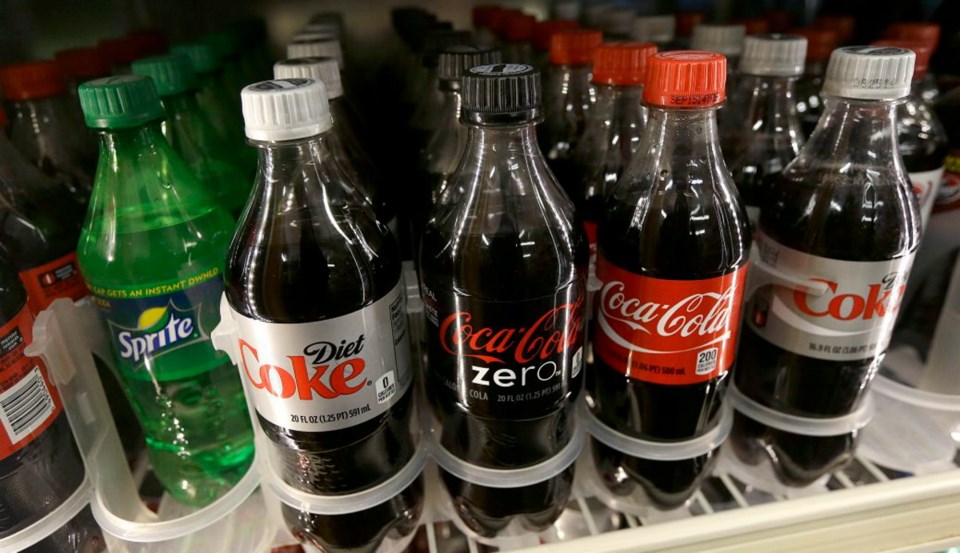 Could unredeemed pop- bottle deposits save B.C.’s precious green bits? Yes, says the Ancient Forest Alliance. So could a property-speculation tax, or money from the extraction of non-renewable natural resources, or a dozen other potential revenue streams.
Could unredeemed pop- bottle deposits save B.C.’s precious green bits? Yes, says the Ancient Forest Alliance. So could a property-speculation tax, or money from the extraction of non-renewable natural resources, or a dozen other potential revenue streams.
The Victoria-based conservation group wants the province to set up a $40-million-a-year fund to protect critical natural areas — crucial wildlife habitat, recreation corridors, sources of drinking water and so on — before they get covered in asphalt.
The twist, though, is that the Alliance isn’t asking the province to raise the money for the proposed Natural Lands Acquisition Program by simply dipping into general revenue.
Instead, the group had the University of Victoria’s Environmental Law Centre look at ways other jurisdictions fund similar endeavours.
The law centre found 16 ways that other governments, mostly in the U.S., pay for conservation projects.
Among them were:
• “Pops For Parks”: The law centre report says $10 million to $15 million a year could be raised by scooping up unredeemed deposits on soft drinks and other containers that B.C. consumers fail to return.
Governments in New York, Connecticut, Massachusetts, Maine, and Michigan reason that unclaimed deposits rightly belong to the consumers who paid them, not the entities that keep them as an unearned windfall profit. Hence, those states claim the bulk of the money in the consumers’ name, arguing that doing so makes up for all the containers that end up in the landfills and as roadside litter.
• Resource Taxes: The law centre argues a small portion of B.C. resource revenue should be dedicated to the fund.
The rationale is that the depletion of non-renewable natural resources should be offset by the acquisition and protection of natural lands.
The U.S. federal government plows $900 million in resource taxes, mostly from the offshore oil and gas industry, into its parks system each year. Individual states have similar programs.
• Land-speculation tax: The idea would be to tax certain types of speculation, making up for the loss of land as B.C. adds 30,000 homes a year. The law centre cited a Vermont tax aimed at property flippers.
This one would be contentious, though: Remember that the province quickly slapped down Vancouver Mayor Gregor Robertson this year when he proposed such a tax to stop speculators from driving up housing prices in the Lower Mainland.
The Ancient Forest Alliance wants the province to adopt those three measures as well as some combination of 13 other tools used elsewhere to fund conservation. Among the possibilities are a dedicated tax on outdoor equipment such as hunting rifles and fishing rods, a tax on environmentally harmful products and a fee for vanity-style licence plates sold to conservationists.
“The mechanisms are creative,” Alliance executive director Ken Wu says.
The important thing, he says, is to come up with a dedicated, predictable source of funding, just as the Capital Regional District did when residents voted for a parkland-acquisition property tax in 1999.
Not that the Natural Lands Acquisition Program would be just for parks. It could also be used to secure Port Alberni’s water supply, say, or to put a protective covenant on wildlife habitat on private land.
B.C. had a pretty aggressive parks-expansion program in the 1990s, but it was based on the dedication of Crown land, not the acquisition of private property. That’s where the issue is particularly acute: the places where development sprawls into the same near-urban areas where fragile eco-systems exist. It’s great to have a park in the wilderness, but you also have to protect your local water supply, or the bog that sponges up the rain and keeps your basement from flooding.
Greater Victoria residents recognized that 16 years ago when they voted for the CRD’s parks acquisition fund, which now generates about $3 million a year. It has been used to preserve much of the region’s taken-for-granted greenery: the Sooke Potholes, bulldozer-bait property next to the Juan de Fuca trail, land linking Mount Work and Thetis Lake parks, and the massive swath of the Sooke Hills that Victorians view as the city's backdrop.
“Repeatedly, voters have voted to tax themselves to protect parks,” says Calvin Sandborn, the UVic law centre’s legal director. That convinces him that there would be widespread public support for a dedicated provincewide conservation fund.
That belief will be put to the test as Wu and his Ancient Rainforest Alliance attempt to get other conservation and recreation groups to sign on to the idea and, the real challenge, win over the government.


